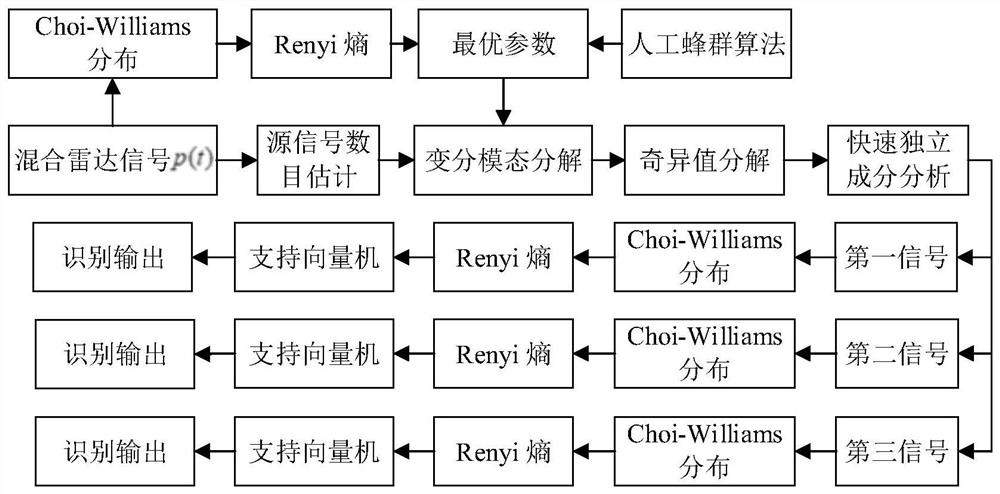Radar radiation source signal separation method based on improved variational mode decomposition
A technology of variational modal decomposition and signal separation, which is applied to pattern recognition in signals, computational models, biological models, etc. Poor signal discrimination and other problems, to achieve the effect of fast iterative optimization, avoid mode aliasing, and avoid recognition errors
- Summary
- Abstract
- Description
- Claims
- Application Information
AI Technical Summary
Problems solved by technology
Method used
Image
Examples
Embodiment Construction
[0053] The technical solution of the present invention will be clearly and completely described below, and the described embodiments are some embodiments of the present invention, rather than all embodiments:
[0054] The embodiment of the present application provides a radar emitter signal separation method based on improved variational mode decomposition, such as figure 1 shown, including the following steps:
[0055] Step 1: Establish the radar emitter signal library, and obtain the additive mixed radar emitter signal p(t);
[0056] Select conventional pulse signal (Continuous Wave, CW), linear frequency modulation signal (Linear Frequency Modulation, LFM), binary phase encoding signal (Binary Phase Shift Keying, BPSK), frequency modulation encoding signal (Costas) and polyphase encoding signal (Frank code Frank, P-phase codes P1, P2, P3, P4) as the research object, the simulation parameters of the radar emitter signal are set as: sampling frequency f s =256MHz, the numbe...
PUM
 Login to View More
Login to View More Abstract
Description
Claims
Application Information
 Login to View More
Login to View More - R&D
- Intellectual Property
- Life Sciences
- Materials
- Tech Scout
- Unparalleled Data Quality
- Higher Quality Content
- 60% Fewer Hallucinations
Browse by: Latest US Patents, China's latest patents, Technical Efficacy Thesaurus, Application Domain, Technology Topic, Popular Technical Reports.
© 2025 PatSnap. All rights reserved.Legal|Privacy policy|Modern Slavery Act Transparency Statement|Sitemap|About US| Contact US: help@patsnap.com



